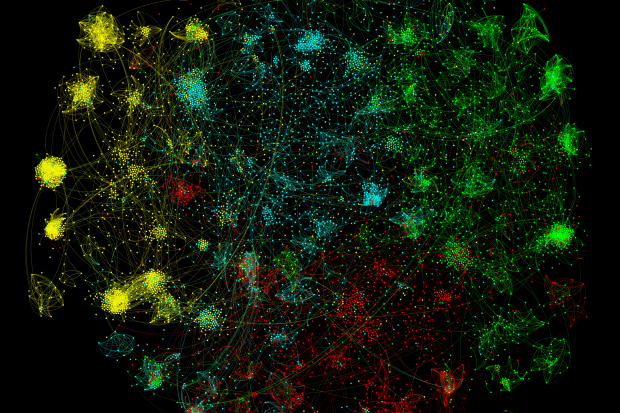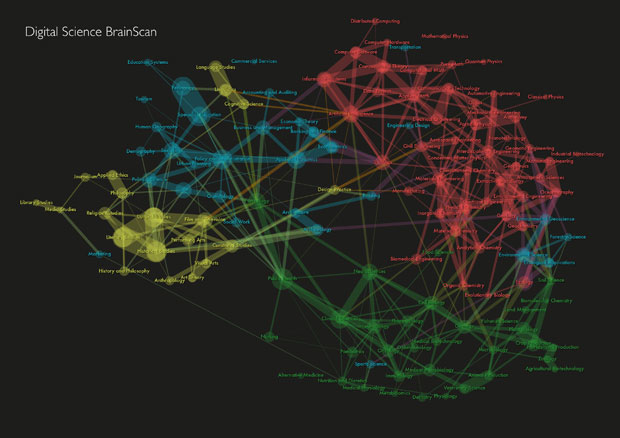A series of new images depict the networks between disciplines that underlie the impact of research submitted to the research excellence framework.
The “brain scan”, created by technology company Digital Science, makes visible links between research fields at institutional and national level.
The images can be used to compare the research portfolios of institutions and research council programmes.
For the first time as part of REF 2014, universities filed impact case studies that described the socio-economic impact of their research. The data that underlies the image comes from text mining the 6,975 case studies to pull out frequently used words and highlight common patterns.
The “brain scan” makes visible the connections contained between research fields within each case study. The main four panels of research – medical and life sciences, physical sciences, social sciences and arts and humanities – are colour coded and using the data it is possible to create individualised images specifically for each institution that submitted to the REF.
“A rich and diverse picture emerges with no apparent limitation on what part of society or the economy any particular discipline might impact,” says the report accompanying the data, entitled The Diversity of UK Research and Knowledge.
“It is not just the applied sciences and engineering subjects that contribute: most case studies cross research areas and deliver multiple types of impact,” it adds.
An online interactive version of the image, which clusters case study content according to similarity, allows users to look specifically at the connections between each of the main panels. Users can also click on each case study to get more information via web links to the people, institutions and disciplines involved.
Ian Viney, director of strategic evaluation and impact at the Medical Research Council, said that the visualisations “are a powerful way of highlighting the huge diversity of important economic and societal impacts realised from UK academic research”.
Jonathan Adams, chief scientist at Digital Science, added: “[It] is a great way to compare research portfolios for institutions ‒ and it can be applied to research council programmes as well. It extends our understanding of the value of diversity to our overall UK achievement.”
Register to continue
Why register?
- Registration is free and only takes a moment
- Once registered, you can read 3 articles a month
- Sign up for our newsletter
Subscribe
Or subscribe for unlimited access to:
- Unlimited access to news, views, insights & reviews
- Digital editions
- Digital access to THE’s university and college rankings analysis
Already registered or a current subscriber? Login










